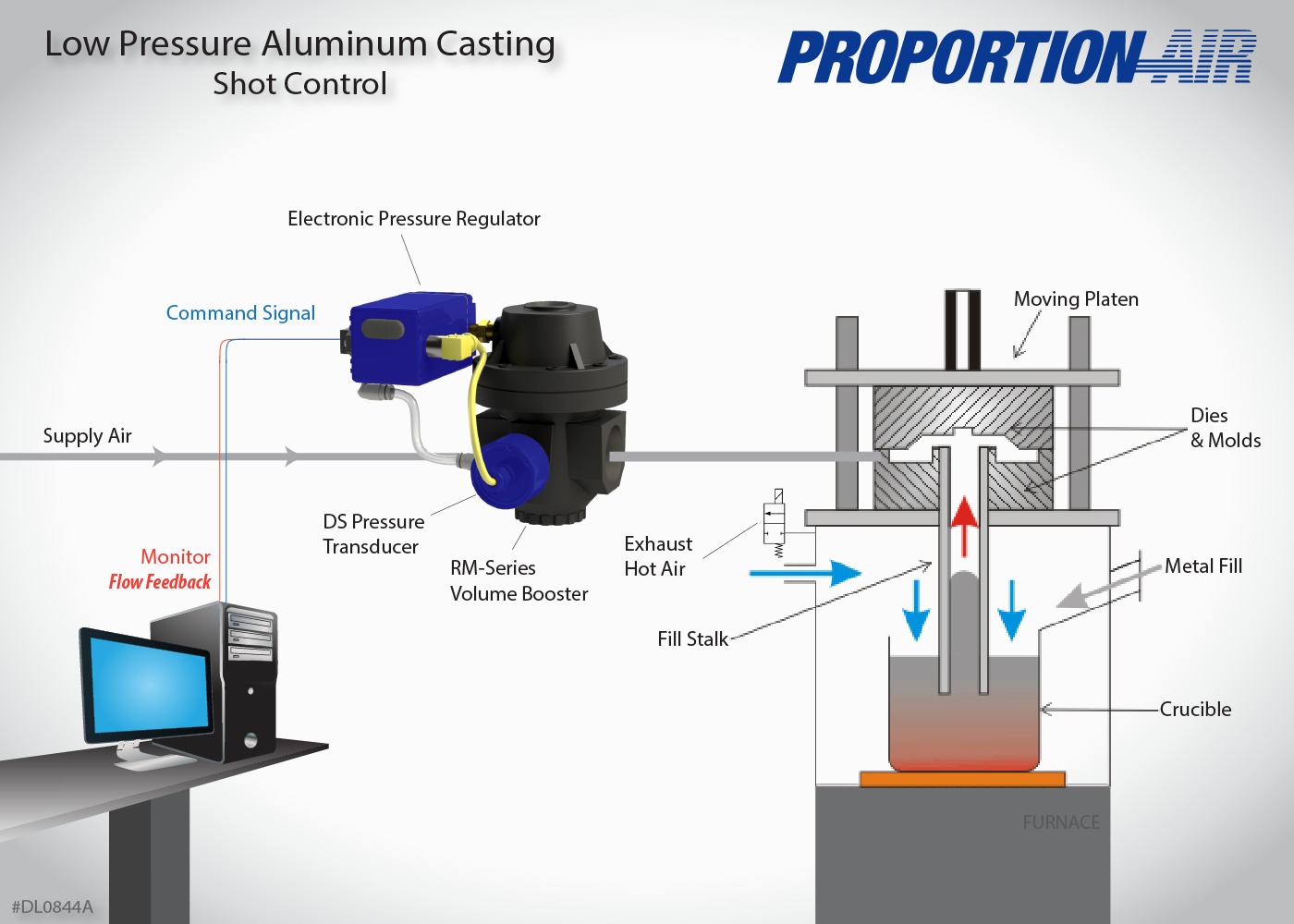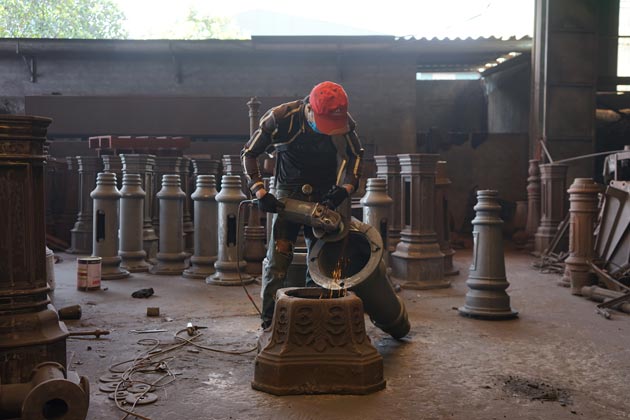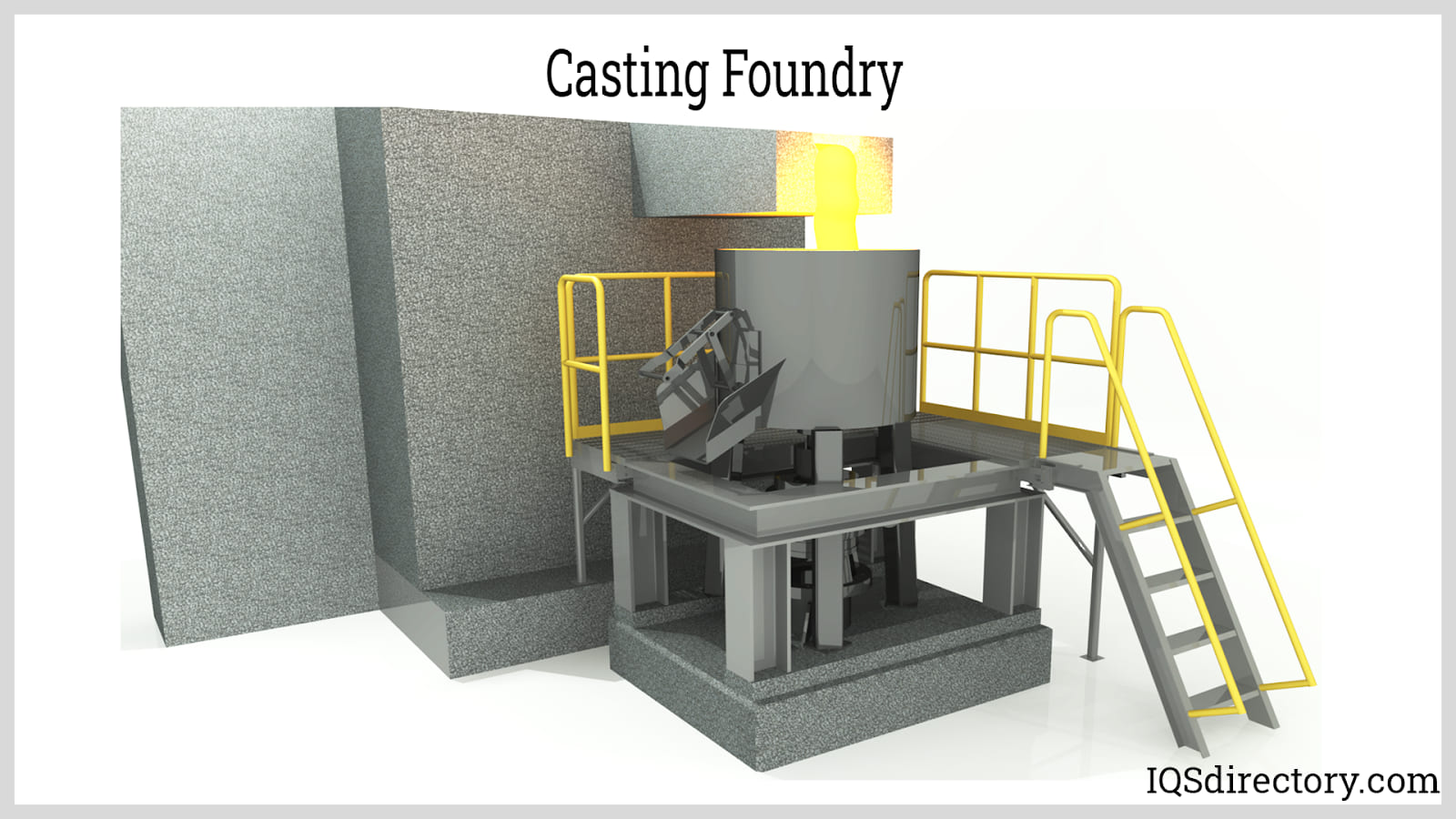Exactly How Aluminum Foundry Adds To Advancements in Aerospace Design
Aluminum factories are integral to developments in aerospace design. They create lightweight, high-strength parts that are crucial for modern-day airplane. Through innovative casting techniques, these shops produce intricate geometries that improve architectural stability. Additionally, the growth of exceptional Aluminum alloys sustains the market's emphasis on gas effectiveness and sustainability. Obstacles continue to be in the manufacturing procedure. Comprehending these variables exposes the extensive effect of Aluminum on aeronautics's future.
The Value of Lightweight Materials in Aerospace Style
As the aerospace industry continues to progress, the significance of lightweight products comes to be increasingly obvious. The demand for efficiency and sustainability drives engineers to focus on making use of materials that decrease general weight without endangering structural integrity. Lightweight products, particularly Aluminum, play an essential function in boosting gas efficiency, improving payload ability, and increasing the total efficiency of airplane.
The assimilation of these products permits for cutting-edge layouts, making it possible for manufacturers to develop even more wind resistant forms that can withstand severe problems. The decrease in weight not just decreases functional prices but likewise adds to a lowered ecological impact, lining up with international efforts toward sustainability in aeronautics.
Advanced Spreading Techniques in Aluminum Foundries
Advanced spreading methods in Aluminum factories play a crucial role in aerospace design by making it possible for the manufacturing of lightweight and accurate components. Developments in mold design and accuracy spreading processes are crucial in accomplishing suitable performance and architectural honesty. Additionally, the growth of lightweight alloys enhances the total effectiveness and effectiveness of aerospace applications.
Innovative Mold And Mildew Layout
Ingenious mold layout plays an important role in the effectiveness and performance of Aluminum factories, particularly within the aerospace market. By leveraging sophisticated materials and methods, modern mold and mildews can be engineered to withstand heats and pressures, making sure peak performance throughout the spreading process. These styles often integrate complex geometries that permit the manufacturing of lightweight yet structurally audio elements, vital for aerospace applications. In addition, the usage of computer-aided design (CAD) software application facilitates specific modeling, allowing shops to mimic and improve mold styles prior to physical production begins. This not just boosts the top quality of actors parts yet also minimizes waste and preparation, causing substantial cost savings. Overall, ingenious mold and mildew design is a keystone of development in Aluminum Foundry modern technology for aerospace engineering.
Accuracy Casting Procedures
The performance of innovative mold styles flawlessly integrates with precision spreading procedures, which are essential for creating top notch Aluminum parts in aerospace design. These processes, including sand casting, pass away spreading, and financial investment spreading, guarantee the creation of complicated geometries with limited tolerances. Advanced strategies like vacuum cleaner spreading and stress pass away casting enhance the integrity and surface finish of the end products. Accuracy spreading decreases product waste while maximizing the mechanical properties of Aluminum, crucial for aerospace applications. In addition, employing real-time monitoring and advanced simulation devices during the spreading procedure allows for instant adjustments, leading to enhanced top quality control. Jointly, these accuracy casting processes position Aluminum shops at the center of aerospace development, sustaining the sector's need for reliability and efficiency.
Light-weight Alloy Advancement
As aerospace engineers look for to boost fuel effectiveness and efficiency, lightweight alloy development comes to be an important focus in Aluminum shops. These factories utilize advanced casting techniques to develop alloys that give remarkable strength-to-weight ratios. Innovations in alloy make-up, including the incorporation of components like lithium and magnesium, allow the manufacturing of materials that withstand severe problems while decreasing total airplane weight. Techniques such as die spreading and investment spreading help with the precision manufacturing of intricate shapes, which are vital for aerospace applications. Additionally, continuous research intends to optimize these alloys for enhanced mechanical residential properties and boosted toughness. By prioritizing lightweight alloy advancement, Aluminum shops considerably add to the development of aerospace engineering, leading the way for extra sustainable and efficient aircraft layouts.

Enhancing Structural Stability Via Aluminum Components
Aluminum parts supply considerable advantages in improving structural stability within aerospace engineering. Their lightweight nature adds to general effectiveness while preserving stamina, which is necessary for airplane performance. Furthermore, the stress resistance buildings of Aluminum aid assure the resilience and dependability of aerospace structures under various functional problems.
Lightweight Material Conveniences
While typical products usually endanger weight for stamina, using Aluminum parts in aerospace engineering provides significant benefits in architectural stability. Aluminum's lightweight nature adds to general design efficiency, enabling even more streamlined airplane that take in less gas, thus enhancing sustainability. The product's superb strength-to-weight proportion guarantees that parts preserve sturdiness without adding unneeded mass. This top quality fosters boosted performance and agility in trip, in addition to enhanced haul capabilities. Furthermore, Aluminum's resistance to deterioration extends the lifespan of aerospace frameworks, decreasing upkeep expenses and boosting safety and security. As suppliers progressively take on Aluminum alloys, the aerospace industry experiences a transformative shift in the direction of much more effective and reliable engineering options that prioritize both performance and ecological obligation.
Tension Resistance Qualities
Although different products have special residential properties, Aluminum's remarkable anxiety resistance stands out as a vital aspect in boosting the architectural integrity of aerospace elements. This resistance plays a crucial function in making certain that airplane can endure different operational anxieties, consisting of exhaustion, influence, and ecological problems. Aluminum alloys, especially crafted for aerospace applications, exhibit high tensile strength while maintaining light-weight qualities, allowing designers to create more reliable frameworks - Aluminum Foundry. Furthermore, the capability of Aluminum to sustain cyclic loading without significant contortion adds to the long life and integrity of aerospace components. As developments continue in Aluminum Foundry strategies, the growth of stress-resistant Aluminum elements guarantees further improvements in efficiency, safety and security, and effectiveness across the aerospace industry, strengthening Aluminum's function as a favored material in modern-day engineering
Gas Performance Improvements Driven by Aluminum Innovations
As the aerospace sector seeks to enhance gas effectiveness, ingenious uses of Aluminum have become an essential solution. Aluminum's lightweight nature significantly reduces aircraft weight, permitting lower gas usage throughout trip. This decrease in weight is vital, as also little declines can result in substantial improvements in overall fuel economy.
Advanced Aluminum alloys, developed for enhanced toughness and resilience, make it possible for makers to produce components that preserve architectural stability while lessening mass - Aluminum Foundry. Additionally, the assimilation of Aluminum in airframes and engine components promotes improved the rules of aerodynamics, adding to decreased drag and raised efficiency
The adoption of Aluminum in aerospace not only meets the need for fuel-efficient layout but likewise lines up with governing stress for reduced emissions. As these technologies continue to progress, they play a substantial role in establishing brand-new benchmarks for fuel effectiveness, ensuring that the aerospace industry can satisfy expanding environmental and financial obstacles.

The Function of Aluminum in Sustainable Air Travel Practices
The increasing emphasis on lasting aviation practices has placed Aluminum as an important material in the quest for greener aircraft design. Known for its light-weight homes, Aluminum significantly minimizes aircraft weight, resulting in lower fuel usage and exhausts. Its recyclability better enhances its sustainability account, as Aluminum can be recycled forever without loss of quality. This particular supports a round economic climate within the aviation field, reducing waste and source depletion.
Furthermore, innovations in Aluminum alloys have actually improved their strength and rust resistance, enabling longer solution life and reduced upkeep requirements. These advancements help with the development of extra effective aircraft frameworks, adding to general sustainability initiatives. In addition, Aluminum's thermal conductivity plays a vital function in energy-efficient styles, enhancing systems such as warm exchangers. Collectively, these features underscore Aluminum's essential role ahead of time lasting aviation, lining up with international campaigns aimed at lowering the environmental influence of flight.
Difficulties Encountered by Aluminum Foundries in Aerospace Manufacturing
While Aluminum factories play an important function in aerospace production, they deal with substantial obstacles that can impact production performance and quality. One major difficulty is the strict high quality control requirements called for in the aerospace sector. Any problem can jeopardize safety and performance, requiring strenuous inspection processes that prolong manufacturing timelines. Additionally, factories often emulate changing basic material costs, which can impact prices and productivity. The complexity of Aluminum alloys used in aerospace applications further makes complex the production procedure, as accurate solutions are essential for attaining wanted mechanical residential properties. Proficient labor lacks impede the capability to preserve top quality production degrees. Ultimately, ecological guidelines enforce limitations on discharges and waste administration, calling for shops to buy lasting practices, which can be cost-prohibitive. These elements collectively develop a landscape where Aluminum shops should continuously adjust to meet the developing demands of aerospace manufacturing while read the article ensuring safety and security and conformity.
Future Patterns in Aluminum Applications for Aerospace Engineering
With advancements in modern technology and enhancing demands for performance, the future of Aluminum applications in aerospace design is poised for substantial makeover. The combination of innovative Aluminum alloys and compounds is expected to boost strength-to-weight proportions, leading to more fuel-efficient airplane designs. On top of that, improvements in additive manufacturing methods will certainly enable for the production of complex Aluminum frameworks that were formerly impossible, optimizing efficiency and reducing waste.

Lasting practices will certainly play an important role, with an expanding focus on reusing Aluminum to minimize ecological influence. The aerospace field is likely to embrace smarter manufacturing procedures, such as automation and Recommended Site expert system, making sure greater top quality and accuracy in Aluminum elements. Cooperations in between Aluminum shops and aerospace firms will foster research and development, paving the way for brand-new applications that fulfill the rigid demands of contemporary aerospace engineering. Overall, the future looks guaranteeing for Aluminum's function fit the skies
Often Asked Questions
What Are the Environmental Influences of Aluminum Manufacturing in Aerospace?
The environmental effects of Aluminum production in aerospace include significant energy usage, greenhouse gas emissions, and environment disruption. Additionally, mining processes can lead to dirt destruction and water contamination, increasing worries regarding sustainability and ecological equilibrium.
How Does Aluminum Contrast to Various Other Materials in Aerospace Applications?
Aluminum provides a distinct mix of light-weight residential properties, rust resistance, and cost-effectiveness contrasted to various other materials. Its high strength-to-weight proportion makes it particularly advantageous for aerospace applications, boosting fuel effectiveness and overall performance in airplane design.
What Credentials Do Aluminum Foundry Workers Need for Aerospace Projects?
Aluminum Foundry employees require customized training in metallurgy and casting strategies, together with expertise of aerospace sector requirements. Certifications in high quality control and safety procedures are also important to ensure conformity with strict aerospace task requirements.
Exist Any Safety Worry About Using Aluminum in Aerospace Design?
Safety and security issues pertaining to Aluminum in aerospace engineering include sensitivity to tiredness, corrosion, and stress and anxiety fractures. Appropriate therapy and alloy option are important to reduce these dangers, making certain structural integrity and general safety and security in aerospace applications.
How Does Aluminum Recycling Benefit the Aerospace Market?
Aluminum reusing substantially benefits the aerospace industry by minimizing product costs, reducing environmental effect, and conserving energy. This lasting practice enhances the market's effectiveness while promoting making use of light-weight, high-performance elements in aircraft manufacturing.
Advanced casting techniques in Aluminum foundries play an important function in aerospace design by making it possible for the manufacturing of light-weight and precise parts. Cutting-edge mold and mildew style plays a necessary function in the effectiveness and efficiency of Aluminum factories, More Bonuses especially within the aerospace industry. As aerospace engineers look for to improve fuel performance and efficiency, lightweight alloy development comes to be a necessary focus in Aluminum foundries. Aluminum alloys, especially engineered for aerospace applications, show high tensile toughness while preserving light-weight characteristics, making it possible for designers to develop much more efficient structures. Collaborations in between Aluminum foundries and aerospace business will cultivate research study and development, paving the means for new applications that meet the rigid demands of modern-day aerospace engineering.